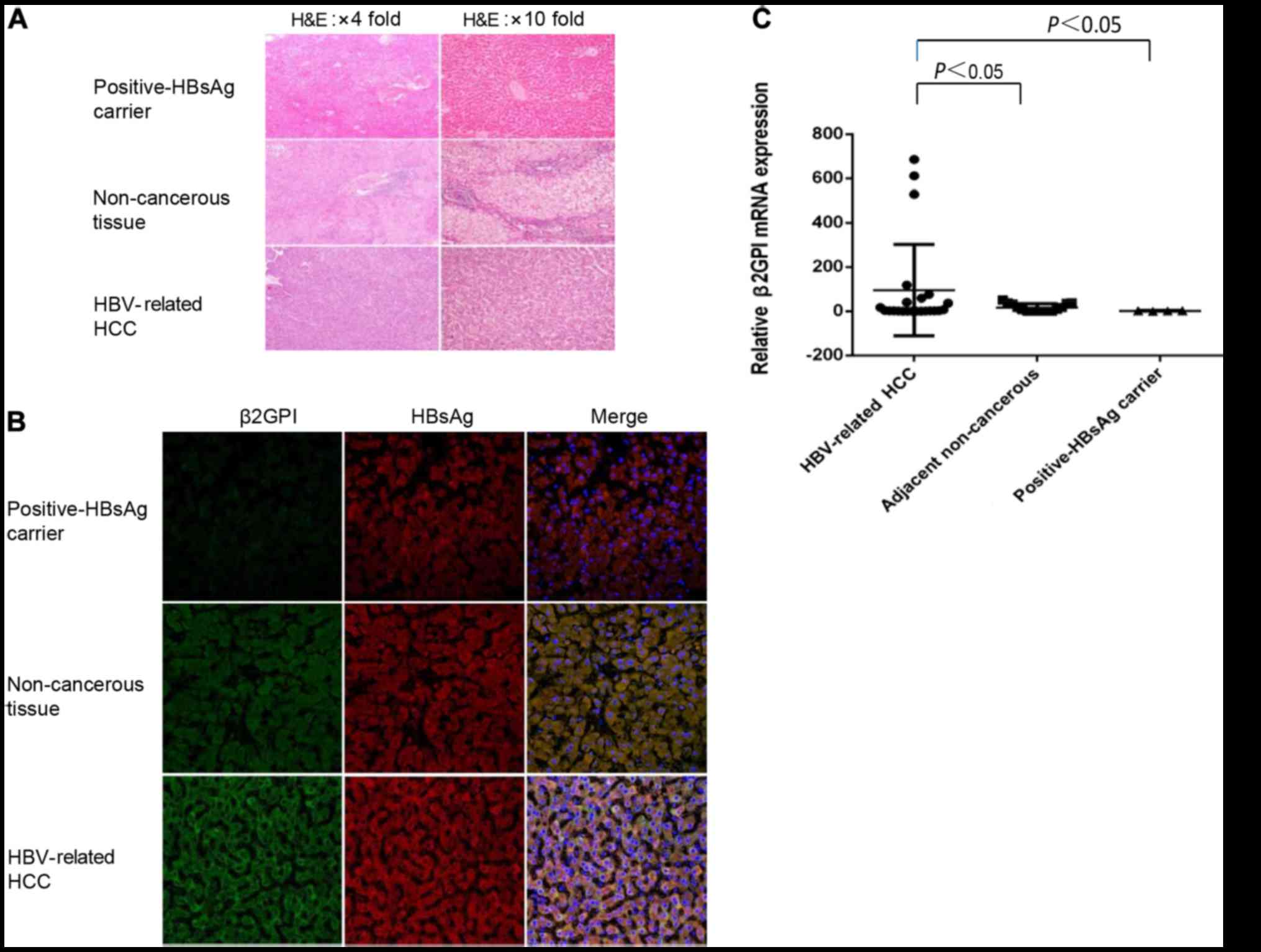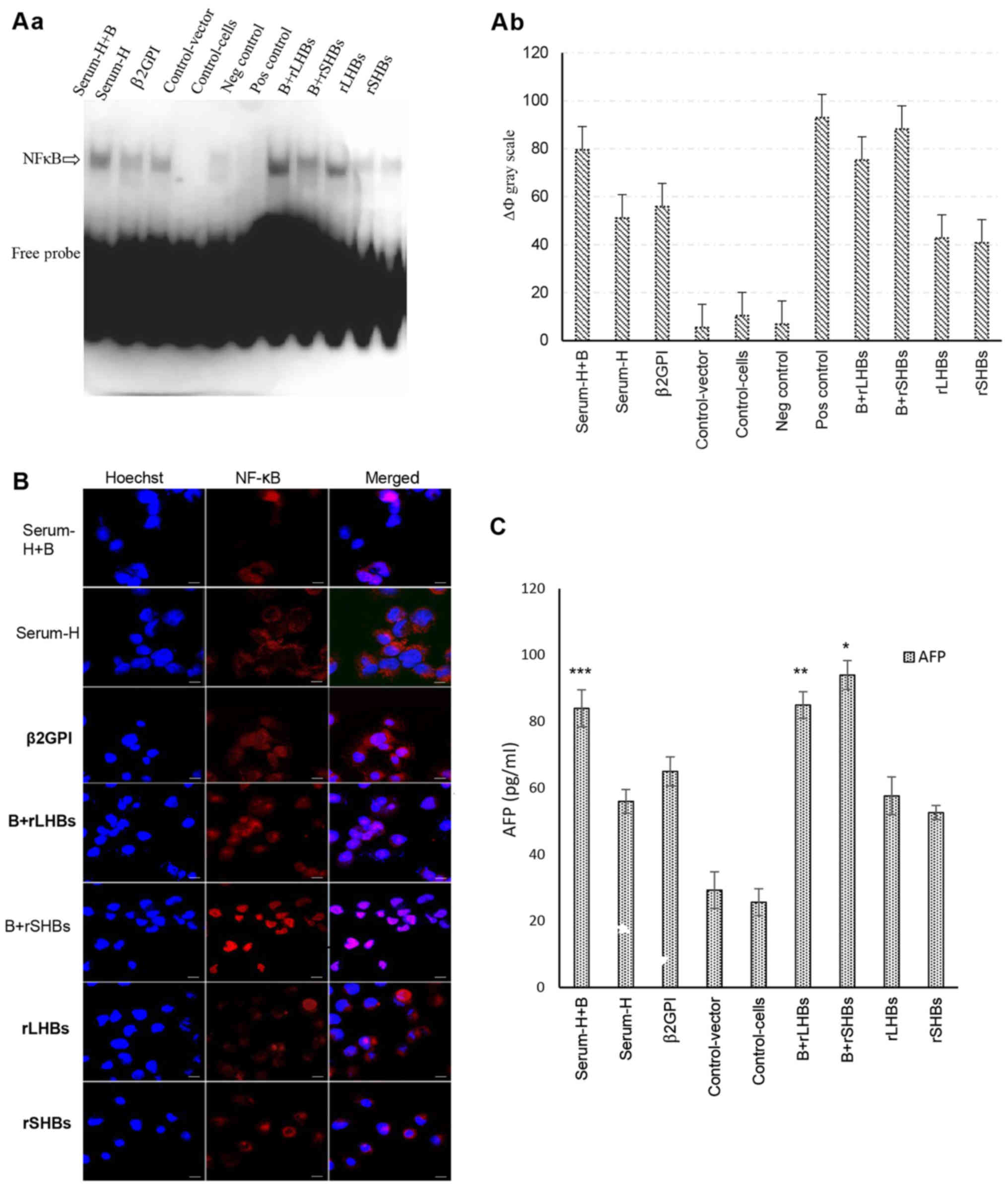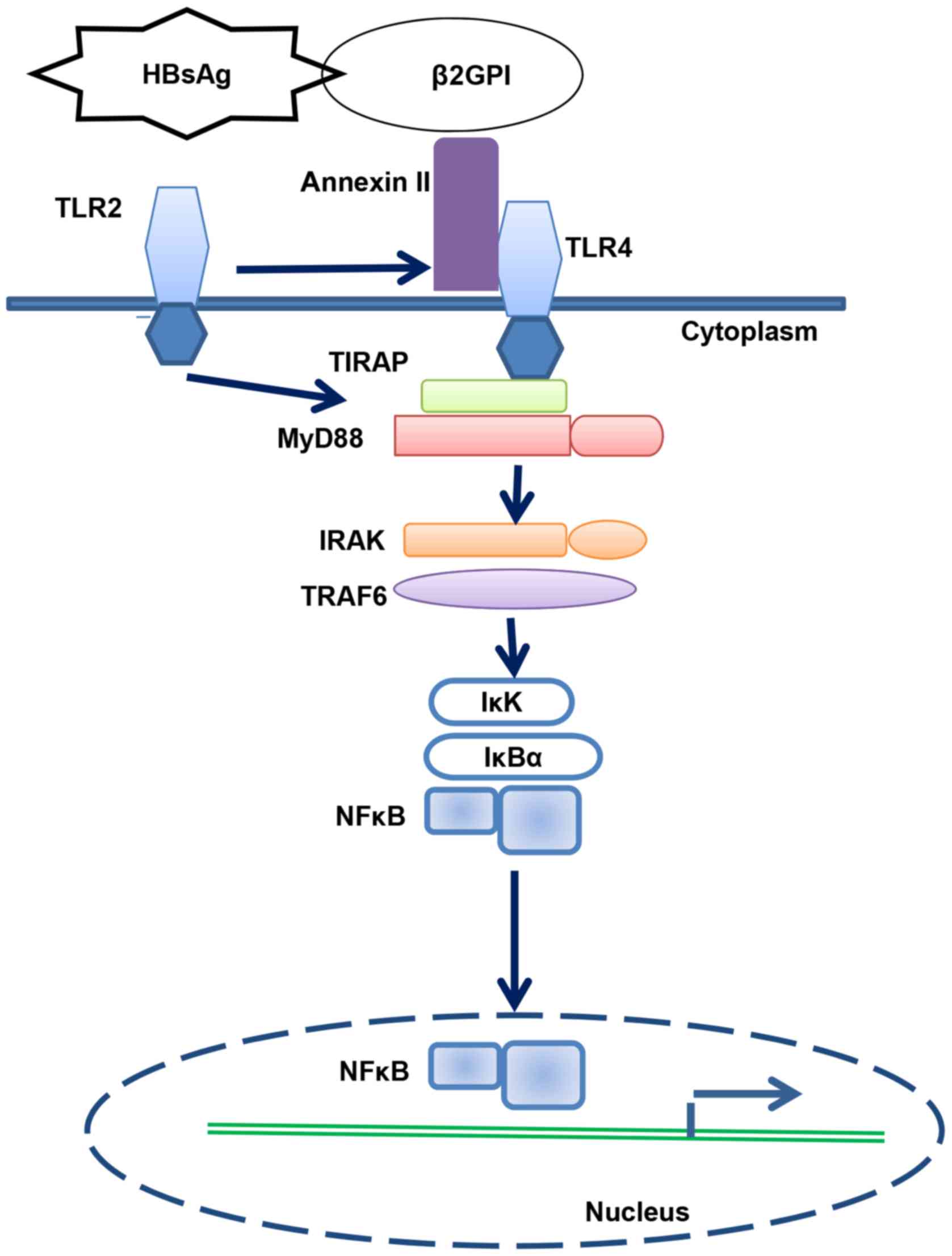HBsAg/β2GPI activates the NF‑κB pathway via the TLR4/MyD88/IκBα axis in hepatocellular carcinoma
- Authors:
- Published online on: June 19, 2018 https://doi.org/10.3892/or.2018.6507
- Pages: 1035-1045
Metrics:
Total
Views: 0 (Spandidos Publications: | PMC Statistics:
)
Total PDF Downloads: 0 (Spandidos Publications: | PMC Statistics:
)
Abstract
Chronic hepatitis B virus (HBV) infection remains one of the leading causes of hepatocellular carcinoma (HCC) globally. However, the mechanism underlying the mediation by HBV surface proteins (HBsAgs) of the early steps in the virus life cycle and following HCC development is unclear. β‑2‑glycoprotein I (β2GPI) specifically interacts with HBsAg and demonstrates high expression during the earliest stages of hepatitis B virus infection. In the present study, the assessment of HCC and adjacent tissues revealed that the levels of mRNA and protein of β2GPI were highly expressed in HBV‑related HCC. Previous studies have reported that HBsAg activates the nuclear factor (NF)‑κB pathway via interaction with β2GPI in HCC. However, the underlying mechanism of how the interaction between HBsAg and β2GPI confers activation of the NF‑κB pathway is still unclear. The HBsAg is comprised of three carboxyl‑co‑terminal HB proteins. In the present study, immunofluorescence assay and EMSA consistently revealed that a combination of recombinant small HBV surface antigen (rSHB) and β2GPI can significantly activate the NF‑κB signaling pathway. Another study from our team revealed that high expression of β2GPI enhanced HBsAg binding to cell surfaces and its interaction with Annexin II. However, Annexin II is not a transmembrane protein. Therefore, by a knockdown experiment with TLR2, TLR4 or MyD88 siRNAs using cells with co‑incubated HBsAg/β2GPI, certain aspects of the mechanism through which the HBsAg/β2GPI complex activates the NF‑κB pathway through the Toll‑like receptor 4 (TLR4)/myeloid differentiation factor 88 (MyD88)/IκBα axis were explained. In the present study, we identified the functional domain of HBsAg co‑interaction with β2GPI for the activation of NF‑κB and revealed the mechanism of the HBsAg/β2GPI‑activated NF‑κB pathway which could contribute to the treatment of HBV‑related HCC. A novel finding of the present study is that HBsAg can bind to β2GPI. We first identified the functional domain of HBsAg with β2GPI to activate NF‑κB. Second, by siRNA knockout experiments, we identified the downstream molecules involved in the activation of NF‑κB induced by β2GPI/HBsAg. In addition, we found that HBsAg/β2GPI activated the NF‑κB pathway through the phosphorylation of Ser32/36 by IκBα.
















